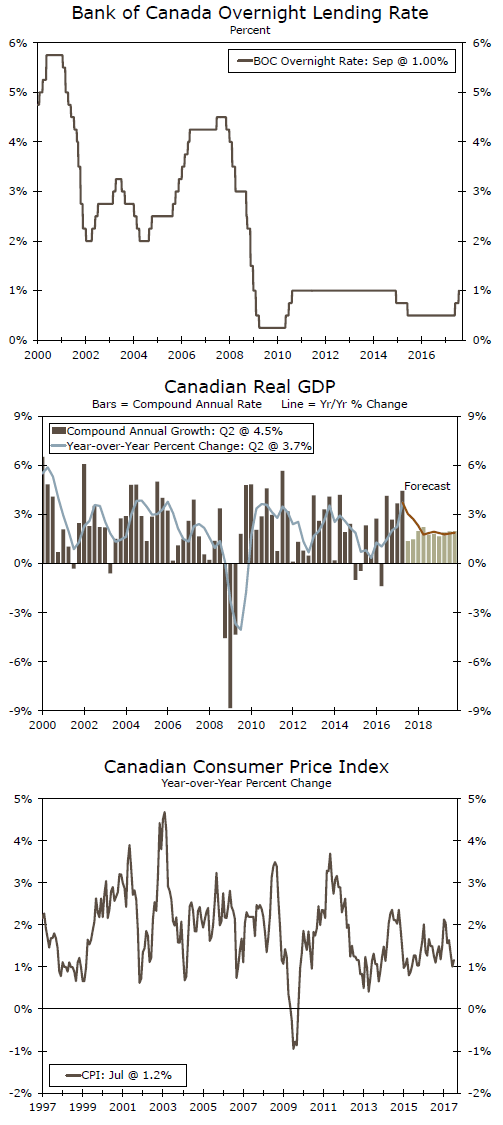The Bank of Canada had at least some element of surprise in announcing today’s increase in its overnight lending rate to 1.0 percent, although the tone of the written statement was somewhat cautious.
Does the Rearview Mirror Look Better than the Road Ahead?
The Bank of Canada (BoC) raised rates this morning in a move that was somewhat anticipated by financial markets, but generally not expected by most economists. Admittedly, we thought October would be the first reasonable opportunity for the Bank of Canada to raise rates. That said, in our note following last week’s better-than-expected report on second quarter GDP, we said "we would be remiss not to acknowledge there is some risk policy-makers could act at their scheduled meeting this coming Wednesday."
The announcement came with a significant re-write of previously published press releases in which BoC policy makers recognized that economic data have been "stronger than expected". Actions speak louder than words, and today’s rate hike demonstrates the fact that the BoC judges the faster rate of growth to be "more broadly based and self-sustaining." Having said that, there was a fair degree of caution in the rest of the published statement that, in our view, hedges those comments about growth being "selfsustaining." We have been hammering the table on the sustainability of consumer spending when household debt levels are elevated and home prices may have overheated in some markets. This is not going unnoticed by the BoC as evidenced by this segment from today’s official statement: "the housing sector appears to be cooling in some markets in response to recent changes in tax and housing finance policies. The Bank continues to expect a moderation in the pace of economic growth in the second half of 2017."
In the first two quarters of 2017, Canada’s growth has been faster than any other economy in the G-7. Although, like a thoroughbred that breaks early in a horse-race, we question whether or not the pace is sustainable. Specifically, we point to the fact that in each of the first two quarters, a double-digit percentage growth rate for inventory accumulation contributed to the outperformance. Any sort of moderation in stockpiling will bring the GDP growth rate back down to earth in the second half.
It bears noting that the rate hike today was couched as a "removal of some of the considerable monetary policy stimulus," and that future decisions are not predetermined. The statement also spoke of some remaining slack in labor markets and subdued wage pressure on inflation. The headline rate of CPI inflation in Canada is just 1.2 percent at present, near the low end of the target range. The last line of the official statement spoke to elevated household debt levels and the need for monitoring how higher rates impact the Canadian consumer. We will be watching that as well. The move by the BoC today likely takes another hike in October off the table. December 6 is now a "live" meeting, though our baseline expectation is that a slowing growth profile will justify the BoC remaining on hold, conditional on the outlook for inflation.














